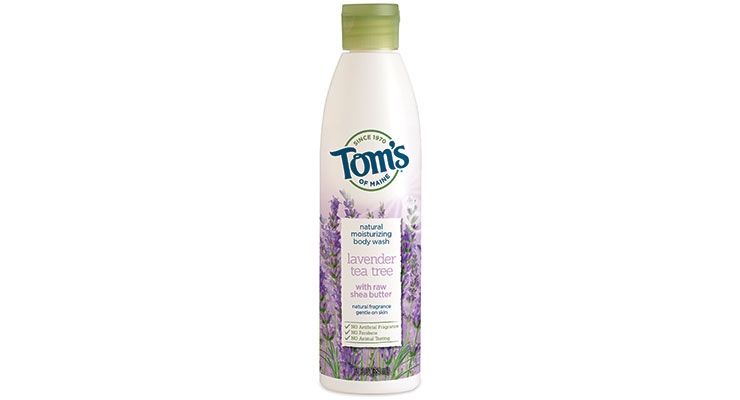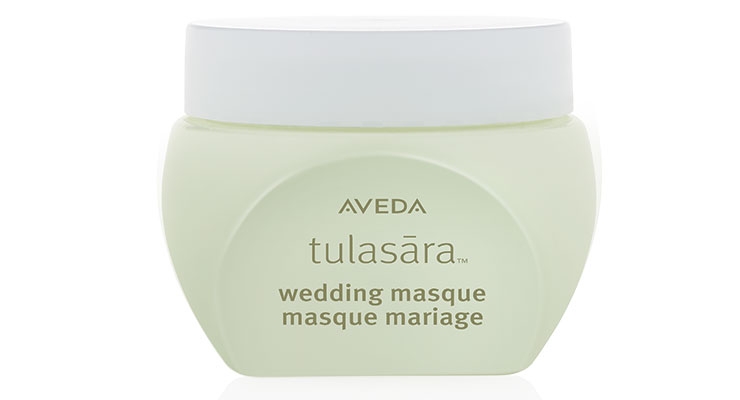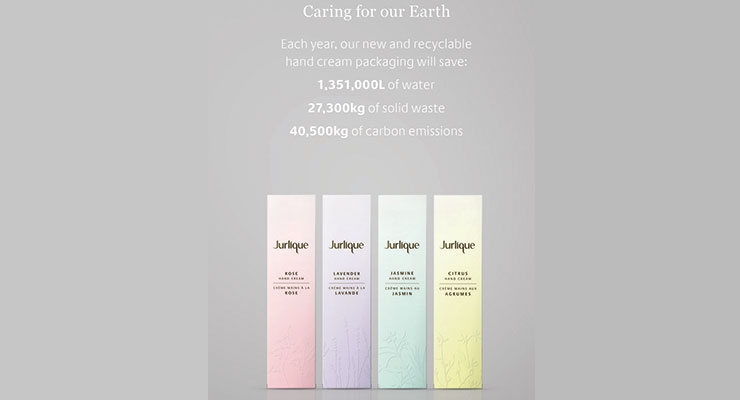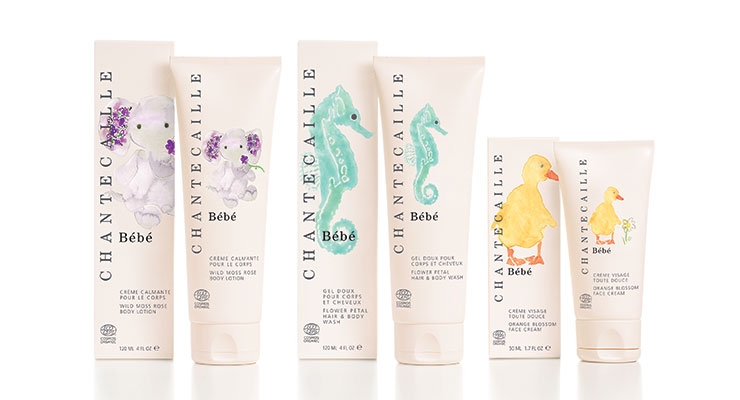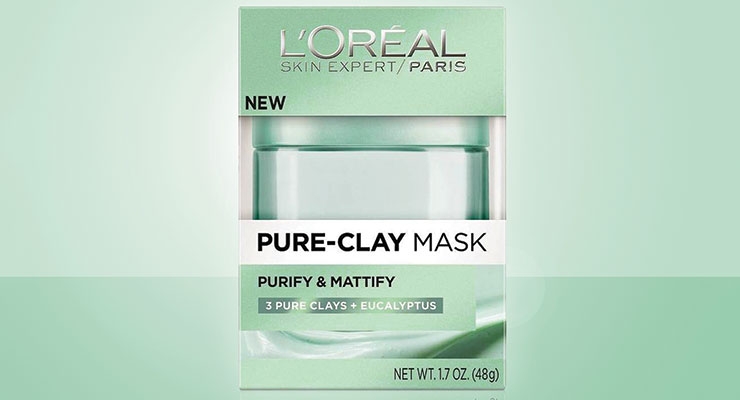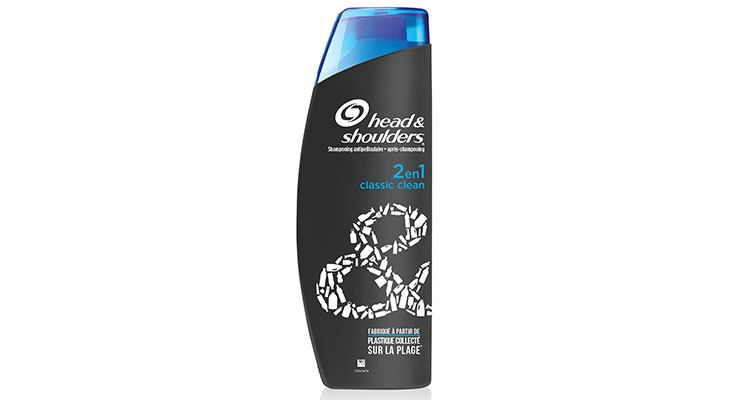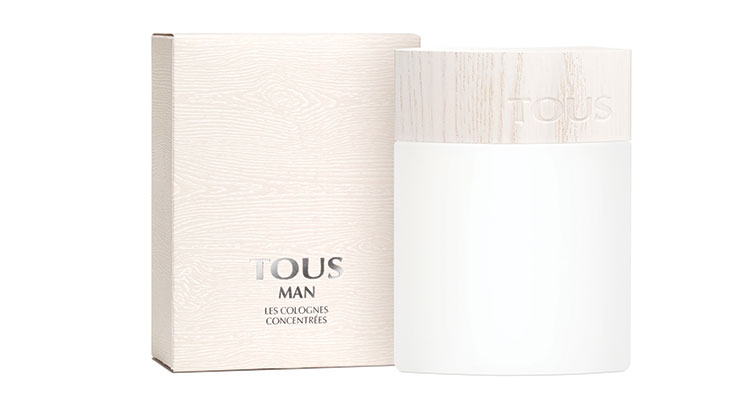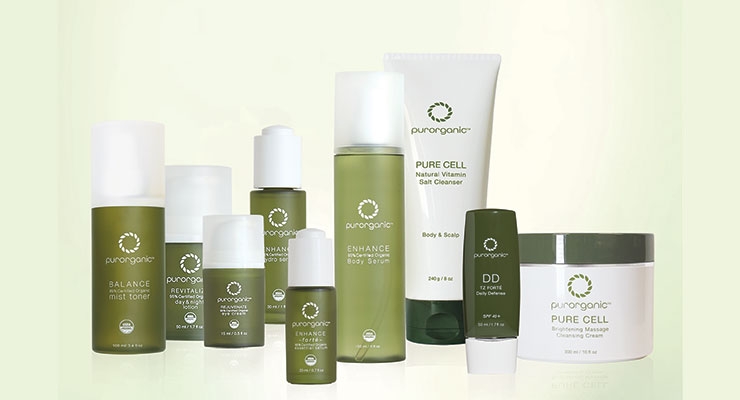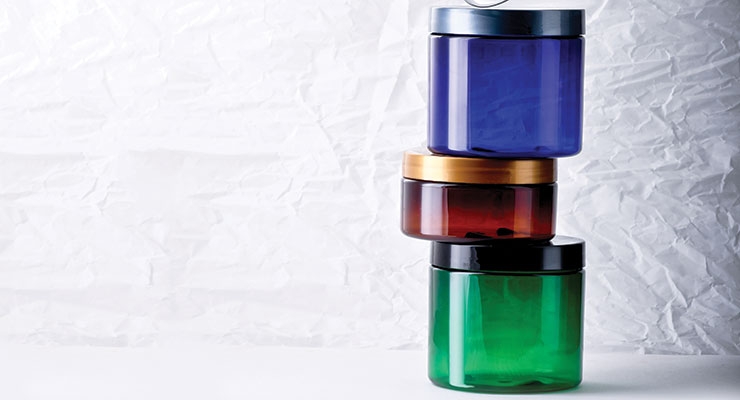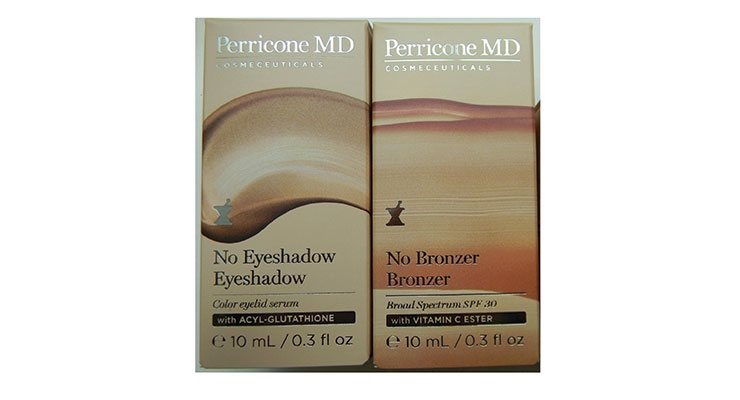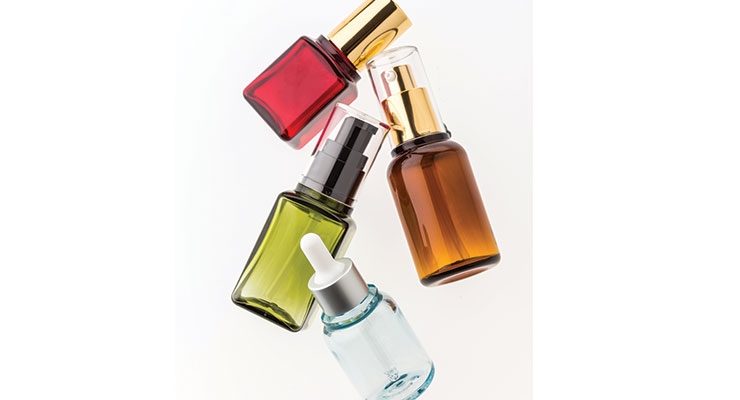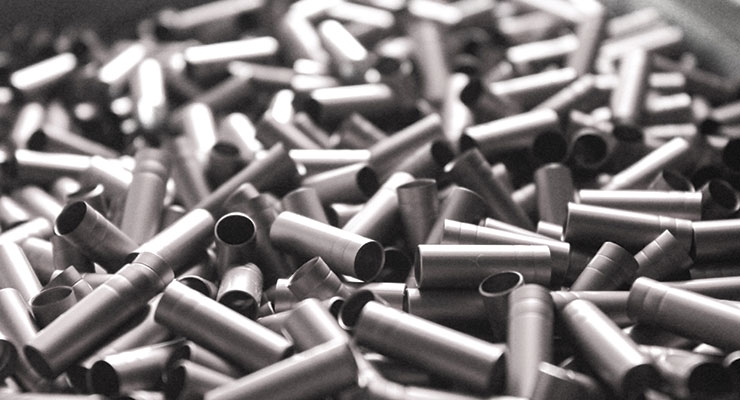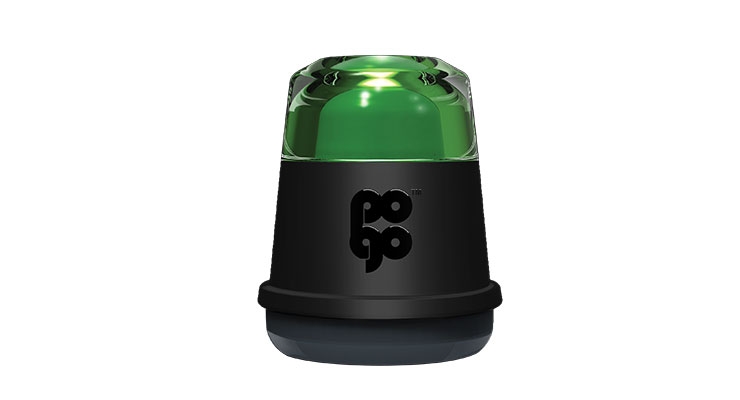Jamie Matusow, Editor-in-Chief05.01.17
Environmentally responsible packaging and practices continue to evolve in light of a new generation of consumers and CEOs, material advances, increasing regulations, environmental concerns—and of course, streamlining the corporate supply chain budget.
In today’s beauty world, as well as in many other industries, much of the emphasis is on the Millennial consumer—and perhaps rightly so, as their influence is powerful and their purchasing habits differ from those of previous generations. Their awareness and knowledge spreads rapidly due to social networks, and affects their behavior and preferences. A simple tweet can cause an astronomical effect—positive or negative.
“Feel-good” ingredients and buying a product that donates a percentage of proceeds to a good cause are just a couple of the factors these potential buyers are increasingly weighing before proceeding to the checkout, real or virtual. They are reading labels carefully and want to know what’s not in a product, as well as what is. The appearance on packages of a number of symbols from Recycling and FSC to Ecocert and Fair Trade are triggering increased recognition as well as curiosity. With an overwhelming shift to verifying the contents of “natural” cosmetic products, will packaging be these consumers’ next logical interest?
Inger Heinke, business development director, North America, Cartonboard, BillerudKorsnäs, sees the correlation between the product and the package. She notes, “Increasingly we see a demand for more eco-friendly products in the beauty space. Consumers are on the lookout for options that are good for them and for the planet. It is the reason natural and organic products across all categories are extremely popular. More than ever before, consumers care to know about every step—from the way ingredients are sourced to how the product is packaged.”
At Epopack, Amy Pan, business manager, says, “We all know that packaging is as important as the product inside and packaging should be your brand story teller; we see this eco-friendly packaging demand driving strongly on natural and organic products, as they are telling the story about products being safe and eco-friendly.”
Concerns voiced by Millennial consumers surrounding packaging and other sustainable issues have already impacted the food and beverage industry.
Elisabeth Comere, the director of environment & government affairs at Tetra Pak, a Sweden-based multinational food packaging and processing company, says, “Consumer behavior related to sustainability is one area where age definitely has an impact. Over half of consumers who are responsive to the sustainability actions of companies are from the Millennial generation (ages 21 to 34). Millennials also represent 51 percent of those who will pay extra for sustainable products and 51 percent of those who check the packaging for sustainable labeling.” (Neilsen, 2014).
Beauty industry suppliers are also noticing increased awareness from brands looking to “do the right thing” both for their own corporate beliefs and to appease consumers in this regard.
Millennial Driven
According to Don Droppo, Jr., president & CEO, Curtis Packaging, Millennials are being raised in a time when there is keen awareness on being good to the environment. He says they are growing up and being educated on the 3R’s, reducing one’s carbon footprint and Zero Waste to landfill. “Natural, organic, cruelty free are embedded in their DNA,” says Droppo, “and if brands don’t meet that criteria, they will simply not support them.” He adds: “To Millennials, it’s a given that you will recycle, sort your trash and ultimately do the right thing. It’s expected that the future of packaging will be made from recycled materials, right sized and recyclable.”
Dennis Bacchetta, director of marketing, Diamond Packaging, refers to a new global study by BBMG and GlobeScan (“Five Human Aspirations and the Future of Brands,” 2016), which reveals insights into the “Aspirational” generation, which represents 40% of the global public, combining “a love of style, social status and sustainability values to shape new cultural norms and rewrite the rules of marketing.” According to the study, “Aspirationals are creating new opportunities for brands to win by connecting with them through a higher sense of purpose—as long as it is done authentically and with rigorous attention to any social or environmental claims.”
Brand authenticity and transparency continue to gain ground when it comes to consumers’ expectations.
“Consumers are the key drivers when it comes to eco-friendly packaging,” Anisa Telwar Kaicker, founder & CEO, Anisa International, tells Beauty Packaging, “They are becoming more savvy about where items come from and want to reduce their carbon footprint.”
According to Heinke, of BillerudKorsnäs, “The transparency consumers expect from brands creates an even greater need for brand owners to be extremely selective about their suppliers. When it comes to how the product is packaged, the ultimate question is: ‘How can we package for a sustainable future without sacrificing innovation, quality and aesthetics?’ ”
Many brands and suppliers we spoke to agree that sustainability is no longer a trend, but a way of doing business, through efforts of everything from light weighting and reducing materials to improving manufacturing efficiencies and energy usage.
At Iggesund Paperboard, for example, Johan Granås, sustainability communication manager, says, “We see an increasing interest in sustainable packaging solutions that has been growing over the last ten years. But we don’t see it as a trend—it is rather an indication that sustainability demands have been raised to a new level and will stay there.”
Elise Kim, account executive, Nest-Filler, says, “With almost every corporation taking part in the environment, having social responsibility in this day and age is far more important than it was years ago.”
However, not everyone agrees with the widespread level of environmentally conscious packaging decisions some beauty industry suppliers are reporting.
Dr. R. Andrew Hurley, assistant professor of Packaging Science as well as a research associate at the Sonoco Institute of Packaging Design and Graphics at Clemson University where he is the director of CUshop, a consumer-experience research laboratory, holds a contrary view to progress being made in eco-responsible packaging. He tells Beauty Packaging: “I’m seeing trending toward the opposite—short runs, overseas production, short development timelines that have little time for sustainable thinking and checklists.”
Hurley does point to exceptions. “Of course,” he says, “there are always a few outliers that will have taken the time to craft a sustainable system, but in my opinion—the trend is away from sustainable thinking. The trend is little thinking.”
But everyone may soon be paying more attention as governments grow active in issuing mandatory regulations that have the power to influence packaging, especially when it comes to paperboard and plastics.
Smithers Pira predicts that the sustainable packaging market, across all industries, will hit a global total of $244 billion by 2018. The global consultancy reports that packaging regulations have been issued worldwide and the number is growing, with more than 33 sustainability and environmental protection directives, regulations, targets and programs in the EU alone that impact packaging.
Zero Waste: The New Norm?
Some cities and countries are increasingly reviewing ways to cut back on waste going to landfills. The New York City Department of Sanitation’s goal is to contribute Zero Waste to landfills by the year 2030. According to Rich Lindgren, CPP, Chainalytics, Singapore is aiming to be a Zero Waste nation, announcing that they will soon require increased sustainability measures in packaging for any company that sells products there. This mandate comes about as Singapore’s single waste facility is expected to be completely filled by 2045.
Zero Waste on the Supplier Side
Richard Engel, president & COO, Decotech, Inc., has been focused on environmentally responsible manufacturing and Zero Waste for several years, and cites customers’ increasing awareness and interest in these practices.
He tells Beauty Packaging: “People focus a lot on how recyclable or sustainable the package itself is, but they don’t think about the size of the carbon footprint it took to make the package in the first place. That’s where we have focused and become an industry leader.”
Engel says, “This makes a difference to some clients in where they choose to place their business.” Decotech currently derives 40% of their energy from renewable sources, and participates in a Waste-to-Energy program for all their non-recyclable waste. “Our latest achievement at Decotech,” says Engel, “is to close the loop on our hazardous waste.” He says that nearly 100% of the material they use that is classified as hazardous waste is now fully recycled for re-use by us or other facilities.”
Engel says he has also seen a change in materials, with an uptick in the use of glass as brands move toward making packaging more eco-friendly. He notes: “Glass is an inherently sustainable packaging material—it can be fully recycled repeatedly and because it is inert, glass is a great packaging material for safeguarding a user’s health and well-being.”
Diamond Packaging also operates its facility in an eco-responsible manner. Bacchetta says all of their folding cartons are manufactured using 100% clean, renewable wind energy and produced in a Zero Manufacturing Waste to Landfill facility. “Furthermore,” he says, “brands can communicate these benefits to consumers through on-product labeling.”
As this type of communication resonates with Millennial/Aspirational consumers, “on-product labeling” is where future opportunities for beauty brands may lie.
Eco-Conscious Opportunities
With numerous studies showing that consumers are paying more attention to packaging than ever before, brands are increasingly using this valuable billboard to connect with shoppers.
David Luttenberger, CPP global packaging director, Mintel Group Ltd., tells Beauty Packaging, “In Beauty and Personal Care (BPC), it’s not as much about the packaging as the product.” For example, as far as ingredients—or lack thereof, he says “paraben-free has been a hot topic over the last year.”
However, Luttenberger sees an opportunity for brands in the BPC space, saying, “These billboards also represent an opportunity to reach out to environmentally conscious consumers with a positive message.”
Mintel looked at eco-friendly packaging claims in North America, and found that 9% of brands in the BPC market carried an eco-friendly claim, which Luttenberger says represents a 16% increase over the period. He says it may sound impressive, but in comparison, 91% of food products carried such a claim. Why food? He says, “Consumers are concerned about food waste—freshness is the No. 1 criteria. They don’t look at BPC in the same way; it’s not ingrained in BPC consumers when it comes to making choices.”
Nonetheless, consumers are interested in BPC packaging, says Luttenberger. In a Mintel study, consumers said they paid attention to “interesting packages.” But fewer than 1 in 10 see it as a purchasing influence—even though it’s a valuable source of information. Mintel determined that on-pack communication is key—consumers want all the information they can get.
Are brands taking advantage of this awareness? When a core of BPC enthusiasts was questioned by Mintel, 33% of U.S. consumers said packaging is a key source of product info—so it could become a primary influence. Or an effective story-teller.
Luttenberger says brands can utilize on-pack info to relate information on claims such as transparency, environmental responsibility and lean manufacturing. “You can even tell a story through product functionality—through the ethos of a product,” he explains. For example, he notes the growth in waterless products—waterless cleansing products and dry shampoos. Another example disrupted the deodorant marketplace with the compact Rexona package. The brand was able to share its benefits to the environment as well as to consumers. “The success of that story was monumental and allowed them to expand into the women’s market, etc.,” says Luttenberger, adding, “the key is educating consumers.”
According to Tetra Pak’s Comere, building awareness is critical. She says, “Consumers today care more about sustainable packaging than they ever have, although they don’t necessarily understand all the factors that go into making a product sustainable. This lack of knowledge and the related gap between consumer intentions and actions has provided companies with an opportunity to educate consumers on the attributes that make a sustainable package, while also increasing awareness of their own products and packaging.”
Take P&G’s new package for Head & Shoulders, for example. Made from 25% recycled beach plastic, it clearly ticks off all of the benefits directly on the gray plastic bottle, which was designed to draw attention to the environmentally responsible package.
Lisa Jennings, vice president, Head & Shoulders and global hair care sustainability leader, Procter & Gamble, tells Beauty Packaging: “Consumers recognize Head & Shoulders for its iconic bottle shape and white and blue colors. The Head & Shoulders beach plastic bottle is grey because of its recycled origins: The plastic collected from the beach is transformed into recyclable pellets that are grey in color and we wanted to keep it that way. The grey Head & Shoulders bottle signals both its recycled origins and differentiation from the rest of the category. On the front design, we communicate that the bottle is made with beach plastic and on the back design, we thank the thousands of volunteers who helped collect plastic from the beach to make this happen and encourage consumers to recycle.” (For more on this bottle, please see BeautyPackaging.com)
Similarly, a new cleansing line of body washes and bar soaps from Tom’s of Maine includes labels that list all of the brand benefits.
“Promoting sustainable packaging initiatives to consumers can be as important as marketing other product attributes. That’s because when everything else is equal, consumers are likely to pick the sustainably packaged option,” says Comere.
Comere sees the benefits of a proactive approach. “Companies can also get into trouble if consumers perceive they are ignoring sustainability. If companies are perceived to not be doing good, they could find themselves on consumer ‘Do not buy’ lists. By doing good, and showing they are doing good, companies and brand owners receive an implicit license to sell.”
Luttenberger agrees, saying brands could be missing opportunities for consumer engagement—versus trying to defend themselves.
Taking Cues from Global Brand Manufacturers
Mintel research, says Luttenberger, sees consumers putting the onus on Big Brands to help the environment, as they “have more clout.” He says it also makes sense from an economic perspective, “as a lean manufacturing process, as part of a bigger equation.”
And that goes for Big Retailers as well.
“As much as people want to pick on Walmart,” says Luttenberger, the company did force companies to reduce their packaging.” He adds, “I see Amazon as the next Walmart, especially with their automatic refill format. As they continue to look at e-retailing, corporate profits, etc., it will continue to push the trend [toward environmentally responsible packaging].” He says it could reduce procurement costs, as well as give brands a story to tell. “It can even “twittify” a brand, says Luttenberger—gain it a global audience by stating, “ ‘here’s what we’re doing…’ ” [rather than having others say that you’re not complying].
Joe Brodner, president of Olcott Plastics, also comments on the leading role Walmart is taking. He tells Beauty Packaging: “The driving trend in the marketplace is that retailers are driving initiatives in requiring their suppliers to meet set sustainability benchmarks. This is not only in secondary packaging, but primary packaging as well.” Last year, he says Walmart released their latest Playbook and has focused on Optimizing Design, Sourcing Sustainability, and Supporting Recycling. “This is similar to the long-held mantra in the sustainability world of Reduce, Reuse and Recycle,” explains Brodner.
A number of the largest BPC manufacturers are also making great strides toward environmentally responsible packaging and practices—and are increasingly dependent on industry suppliers to reach their target goals.
Among them, L’Oréal has pledged that by 2020, they will ensure that 100% of their products show environmental or social improvement.
Early this year, Unilever announced that all of their plastic packaging will be fully reusable, recyclable or compostable by 2025.
Paul Polman, Unilever CEO, stated in a press release: “Our plastic packaging plays a critical role in making our products appealing, safe and enjoyable for our consumers. Yet it is clear that if we want to continue to reap the benefits of this versatile material, we need to do much more as an industry to help ensure it is managed responsibly and efficiently post-consumer use.”
P&G recently announced that a half-billion bottles of its hair care products would be made with recycled plastic annually by 2018 and in Europe, by the end of 2018, more than half a billion bottles per year will include up to 25% PCR plastic.
What’s Driving Demand
Suppliers who are seeing an increasing interest for eco-friendly packaging from their customers in the beauty category cite a number of motivating interests.
For instance, Anisa International’s Telwar Kaicker, sees increased customer interest in the FSC certified packaging they offer. She says, “We feel consumers are now thinking about sustainability as many beauty packaging items display the recycling icon on outer packaging.”
At Diamond Packaging, Bacchetta says, “Environmentally friendly packaging has become an expectation of our customers. We continue to see renewed interest in highly decorative packaging done economically and more sustainably.” Further, says Bacchetta, “Brands want their packaging to be disruptive, visually appealing, and eco-friendly at the same time.”
An increase in interest, as well as in “actual orders” for eco-friendly packaging from their customers has occurred more recently than in previous years, according to Nest-Filler’s Kim.
“With the media’s constant bombardment of reminders and ads to Reduce, Reuse, Recycle, it is easier now than ever for each individual consumer to be responsible with just a little, positive effort,” says Kim. “Eco-friendly packaging is recyclable; it is also highly compatible with many high active ingredients in product formulations that may not always be compatible with other non-sustainable plastics,” she explains. “With consumers’ interests rising in sustainable options, more consumers will seek naturally derived products from companies that will most likely be opting for eco-friendly packaging to accommodate their customer’s demands and interests.”
Specific Requests
In recent years, wood has also grown as a desirable option for packaging in the cosmetics and fragrance industry.
According to Àngel Pujolasos, CEO, Pujolasos Wood & Pack, “Brands associated with bio and eco cosmetics and makeup like to use wood as a material associated with ecology—especially true in the Luxury category.” One of the most recent and “more sustainable packages” Pujolasos developed is the cap for Les Colognes Concentrées of Tous Perfumes. “We used sustainable ash wood to manufacture the cap. With this material, we also achieved an exclusive, customized design.”
At Diamond, Bacchetta says “Many companies are also looking at sustainable packaging design as one aspect of the larger role of Corporate Social Responsibility, which includes sustainability, diversity, and socially responsible business practices. They recognize that brands, including many smaller boutique brands, are winning over consumers by doing “the right thing,” says Bacchetta.
More customers are looking for transparency, says Heinke, of BillerudKorsnäs. “As brands and consumers are savvier regarding environmental impact, reporting is key—clear information on CO2 emissions, certifications, as well as where raw materials are sourced from, is extremely important.” She adds: “Brands want to innovate and challenge conventional packaging in a way that is sustainable—and they must prove it.”
Recently, Taoasis, a Germany-based cosmetics company worked with BillerudKorsnäs Artisan on a solution that would provide stability, look good and meet high sustainability standards. “When we saw BillerudKorsnäs Artisan, we knew immediately that it was the right solution,” says Axel Meyer, from Taoasis. “You don’t have to explain that it’s natural.” Adolf Wehrhahn Kartonagenfabrik, Meyer’s packaging converter, adds. “There’s nothing plastic-y about the finish,” he says. “It gives an impression of nature.”
When brands are specifically looking for sustainable packaging, they will often request certain materials such as glass, PP, PET, & PETG, according to Nest-Filler’s Kim, who says, “These four materials are most popular among our customers because they are highly compatible with many formulations.” She explains further: “Since glass is impermeable and non-porous, there is no disruptive chemical interaction between the container and product inside. Glass also retains moisture and oxygen for prolonged shelf life. PP is also highly sought after because it is price effective while being compatible with different formulas. PET and PETG have their benefits when it comes to sustainable materials because they offer the absolute transparency and clarity that PP cannot.”
Nest-Filler recently worked with PurOrganic, a brand that prides itself on being 95% USDA Organic Certified. For their launch, the brand specifically used sustainable packaging consisting of PP airless and atmospheric bottles, PP tottles, PETG jars, and glass dropper bottles.
“We were excited to find a packaging company that was able to cater to our specific needs for recyclable components,” says Lina Park of PurOrganic Beauty. “Nest-Filler had many different options in each type of packaging category that we needed, and their team is always willing to help and go the extra mile to find exactly what I’m looking for in terms of quality and price.”
Droppo of Curtis says, “We have a lot of brands requesting sustainable packaging such as Origins, Shiseido, Alex & Ani, N.V. Perricone, Glossier, Unilever and many more.” He says some are looking for high PCW percentages while others are looking for FSC/SFI /PEFC certified stocks.
For a 2016 gift set, Curtis worked with Neenah Paper “and a global cosmetic leader” to develop a 19.6 point, FSC-certified paperboard comprised of 50% PCW that was coated on one side. Droppo says this was a first for Neenah as “they pushed the limits of their equipment to develop a thicker paperboard strong enough for gift sets all with a coated surface. It was a huge success and the Neenah product may become mainstream.”
Sometimes specific customer requests lead a supplier to new avenues. Brodner, of Olcott Plastics, says his company traditionally made containers and closures from polypropylene and polystyrene, but when a customer asked for post-consumer resin they couldn’t help them because “we only use FDA certified materials meeting 21 CFR 181 for food contact.” Without a reliable supply of FDA compliant polypropylene and polystyrene that is also post-consumer, the options for sustainability initiatives were restricted, says Olcott.
However, with the introduction of Olcott’s PET jar line, they are now able to meet marketplace requests for post-consumer content packaging. “With a reliable FDA certified source of PET, Olcott offers a package that has 30% PCR with FDA certification that has comparable qualities to a 100% virgin container,” says Brodner. “When Olcott designs a new package, we look at the customer demands for a product that is lighter, uses recyclable materials and includes some recycled content. Our new line of PET did just that. The process we use allows for a lower weight final package that includes PCR and is marked as a recyclable package so the end user knows it can go in the recycling bin.”
Epopack’s Pan says they also made PET an easy solution for customers. Pan says some brands are struggling [with the idea] that eco-friendly packing can’t be elegant or upscale. But she says Epopack’s PET heavy wall bottles and jars are made in recyclable PET material “which creates a strong and solid feeling”— and due to the extra heavy wall, “the transparency makes the bottle look like a glass container.”
Taking it a step further, Pan says they visited the recycling station in Taiwan, and found that “the most difficult and complex work is to sort out the recycling matter and classify it.” So to improve and simplify this process, she says Epopack “innovated the single material concept to make recycling and reusing the material easier. For example: our PET heavy wall jars (cap, lid and jar base) are all made in PET and only PET.”
Documentation throughout the supply chain has also become more of an issue.
Johan Granås, sustainability communication manager, Iggesund Paperboard, says there has been a change over time in being “constantly asked for more documentation of our sustainability practices and everything connected with them.” He says, “This is clearly driven by the sustainability work among brand owners, who want to be able to convey the quality of their products in this respect to consumers.”
The Future of Cosmetics Packaging
How will consumers’ increased awareness of environmentally responsible packaging impact the future of the Beauty industry?
Heinke, of BillerudKorsnäs, says, “As consumers ask more questions about sustainability, and ethical matters influence purchasing decisions, beauty brands will continue to move towards a more environmentally friendly path. This will continue to impact the way products are packaged.”
Telwar Kaicker, of Anisa International, agrees. “We feel that consumers will continue to demand more eco-friendly products, thus driving brands to follow suit.”
“In the past,” says Olcott’s Brodner, “the cost of sustainability was higher than the marketplace would support due to underdeveloped supply chains of recycled material and collection of used packages.” He says the consumer is now more accepting of the practice of including recycled material in packaging, and material suppliers have a reliable high-quality supply of resins to manufacture high-quality products. “As additional materials receive FDA food contact status,” he says, “more and more packaging will have the opportunity to incorporate PCR into packaging that is on shelf.”
While Hurley holds a downbeat attitude about today’s packaging priorities, he maintains that “Sustainability is an important consideration in all design efforts.” To this end, he says, “At Clemson, we have created a variety of checklists and handouts to force design thinking and no-waste strategies to use at the project kickstart meeting. We have sustainability and design courses at PackagingSchool.com that run through these options. Sustainable thinking is hard, and compounded in beauty/healthcare, because timelines are tight, production is short, and margins/budgets are larger. It creates an ecosystem of haste and waste—it’s just easier to make a mold, run 15K parts, ship them across the world, and start a new mold/run two quarters later. Within this process, several tiers of packaging will be discarded, with lots of waste here (respective to the order quantity).”
“Over time, Comere, of Tetra Pak, believes that “the influence of Millennial consumers will only expand.” She says, “These consumers are tech-savvy, social networkers who are both environmentally conscious and interested in a company’s sustainability actions, including packaging choices.”
On the brand side, P&G’s Jennings tells Beauty Packaging: “I imagine a future of innovation and collaboration where all the stakeholders in the value chain are involved in driving sustainable consumption practices and habits. I imagine a future where companies like P&G and other leaders in their industry step up, invest and get involved in the long-term solutions. I imagine a future where brands like Head & Shoulders continue innovating to shape the industry. I imagine a future where partnerships like the ones we have with TerraCycle and SUEZ continue to thrive. The launch of the Head & Shoulders recyclable shampoo bottle made with beach plastic is a step toward this future.”
Speculation aside, does sustainable packaging yet translate into increased sales?
Tetra Pack’s Comere says, “While positive consumer attitudes related to sustainability bode well for companies focused on sustainable packaging, many companies want to know whether having sustainable packaging actually impacts sales. The answer: Yes it does.”
Anisa International has been designing, manufacturing and influencing artistry tools for leading brands in the beauty industry for more than two decades. In 2003, the company opened a fully integrated manufacturing facility in Tianjin, China, where much of their efforts are designed for the health and well-being of its workers. For example, man-made brush fibers reduce the carbon footprint of their artistry tools, and are produced without carcinogenic dye, ensuring the fibers pose no health concerns to the face.
To address new mandates from the Chinese government, Anisa International invested in the construction of a new ferrule facility that is committed to environmentally sound manufacturing. According to the supplier, ferrule manufacturing historically has had a negative impact on the environment, and traditionally has been the most non-eco-friendly component of brush making. This is because nickel acetate is a chemical compound used to seal in colors on the ferrule, and when waste from this process is disposed of it can pose serious environmental concerns. As mechanical polishing can be another process with the potential to emit harmful particles into the air, Anisa International has developed a wax-based “wet” system which is sprayed onto the drums of polishing equipment to eliminate harmful airborne particles from being released into the air.
The plant also recently acquired FSC certification, with FSC-certified wood handles now available. They are also moving toward water-based paints.
Eco Lips’ POGO lip balm, handcrafted in Cedar Rapids, IA, received the WorldStar Award from the World Packaging Organization. Made from 100% post-consumer content, the lip balm package is also refillable.
According to Steve Shriver, Eco Lips CEO, “We’ve been looking for innovation in packaging design for a lip balm delivery system that aligns with our company ethos. It wasn’t until we were approached by a couple of designers from Canada and collaborated with them, that we felt we finally hit the mark. Having a container that is made from 100% post-consumer content was key as we continue to push the envelope on sustainable design and recyclability.”
Why was developing a 100% refillable package a goal?
Jane Merten, vice president sales & marketing, tells Beauty Packaging: “The POGO refill is part of our evolution. Since Eco Lips’ inception in 2003, we have always been working toward innovation in packaging design for a lip balm delivery system that aligns with our company ethos. Our other Eco Lips products have long used recyclable lip balm containers made with 40 percent recycled content, and biodegradable/compostable FSC Certified Paper tubes.”
But, she says, “we are always asking, ‘how can we do better?’” POGO is that next stage. The container is made from 100% post-consumer content, while the refill aspect offers consumers maximum versatility and individuality. Consumers can switch out POGO flavors as often as they want, without wasting the packaging.
In today’s beauty world, as well as in many other industries, much of the emphasis is on the Millennial consumer—and perhaps rightly so, as their influence is powerful and their purchasing habits differ from those of previous generations. Their awareness and knowledge spreads rapidly due to social networks, and affects their behavior and preferences. A simple tweet can cause an astronomical effect—positive or negative.
“Feel-good” ingredients and buying a product that donates a percentage of proceeds to a good cause are just a couple of the factors these potential buyers are increasingly weighing before proceeding to the checkout, real or virtual. They are reading labels carefully and want to know what’s not in a product, as well as what is. The appearance on packages of a number of symbols from Recycling and FSC to Ecocert and Fair Trade are triggering increased recognition as well as curiosity. With an overwhelming shift to verifying the contents of “natural” cosmetic products, will packaging be these consumers’ next logical interest?
Inger Heinke, business development director, North America, Cartonboard, BillerudKorsnäs, sees the correlation between the product and the package. She notes, “Increasingly we see a demand for more eco-friendly products in the beauty space. Consumers are on the lookout for options that are good for them and for the planet. It is the reason natural and organic products across all categories are extremely popular. More than ever before, consumers care to know about every step—from the way ingredients are sourced to how the product is packaged.”
At Epopack, Amy Pan, business manager, says, “We all know that packaging is as important as the product inside and packaging should be your brand story teller; we see this eco-friendly packaging demand driving strongly on natural and organic products, as they are telling the story about products being safe and eco-friendly.”
Concerns voiced by Millennial consumers surrounding packaging and other sustainable issues have already impacted the food and beverage industry.
Elisabeth Comere, the director of environment & government affairs at Tetra Pak, a Sweden-based multinational food packaging and processing company, says, “Consumer behavior related to sustainability is one area where age definitely has an impact. Over half of consumers who are responsive to the sustainability actions of companies are from the Millennial generation (ages 21 to 34). Millennials also represent 51 percent of those who will pay extra for sustainable products and 51 percent of those who check the packaging for sustainable labeling.” (Neilsen, 2014).
Beauty industry suppliers are also noticing increased awareness from brands looking to “do the right thing” both for their own corporate beliefs and to appease consumers in this regard.
Millennial Driven
According to Don Droppo, Jr., president & CEO, Curtis Packaging, Millennials are being raised in a time when there is keen awareness on being good to the environment. He says they are growing up and being educated on the 3R’s, reducing one’s carbon footprint and Zero Waste to landfill. “Natural, organic, cruelty free are embedded in their DNA,” says Droppo, “and if brands don’t meet that criteria, they will simply not support them.” He adds: “To Millennials, it’s a given that you will recycle, sort your trash and ultimately do the right thing. It’s expected that the future of packaging will be made from recycled materials, right sized and recyclable.”
Dennis Bacchetta, director of marketing, Diamond Packaging, refers to a new global study by BBMG and GlobeScan (“Five Human Aspirations and the Future of Brands,” 2016), which reveals insights into the “Aspirational” generation, which represents 40% of the global public, combining “a love of style, social status and sustainability values to shape new cultural norms and rewrite the rules of marketing.” According to the study, “Aspirationals are creating new opportunities for brands to win by connecting with them through a higher sense of purpose—as long as it is done authentically and with rigorous attention to any social or environmental claims.”
Brand authenticity and transparency continue to gain ground when it comes to consumers’ expectations.
“Consumers are the key drivers when it comes to eco-friendly packaging,” Anisa Telwar Kaicker, founder & CEO, Anisa International, tells Beauty Packaging, “They are becoming more savvy about where items come from and want to reduce their carbon footprint.”
According to Heinke, of BillerudKorsnäs, “The transparency consumers expect from brands creates an even greater need for brand owners to be extremely selective about their suppliers. When it comes to how the product is packaged, the ultimate question is: ‘How can we package for a sustainable future without sacrificing innovation, quality and aesthetics?’ ”
Many brands and suppliers we spoke to agree that sustainability is no longer a trend, but a way of doing business, through efforts of everything from light weighting and reducing materials to improving manufacturing efficiencies and energy usage.
At Iggesund Paperboard, for example, Johan Granås, sustainability communication manager, says, “We see an increasing interest in sustainable packaging solutions that has been growing over the last ten years. But we don’t see it as a trend—it is rather an indication that sustainability demands have been raised to a new level and will stay there.”
Elise Kim, account executive, Nest-Filler, says, “With almost every corporation taking part in the environment, having social responsibility in this day and age is far more important than it was years ago.”
However, not everyone agrees with the widespread level of environmentally conscious packaging decisions some beauty industry suppliers are reporting.
Dr. R. Andrew Hurley, assistant professor of Packaging Science as well as a research associate at the Sonoco Institute of Packaging Design and Graphics at Clemson University where he is the director of CUshop, a consumer-experience research laboratory, holds a contrary view to progress being made in eco-responsible packaging. He tells Beauty Packaging: “I’m seeing trending toward the opposite—short runs, overseas production, short development timelines that have little time for sustainable thinking and checklists.”
Hurley does point to exceptions. “Of course,” he says, “there are always a few outliers that will have taken the time to craft a sustainable system, but in my opinion—the trend is away from sustainable thinking. The trend is little thinking.”
But everyone may soon be paying more attention as governments grow active in issuing mandatory regulations that have the power to influence packaging, especially when it comes to paperboard and plastics.
Smithers Pira predicts that the sustainable packaging market, across all industries, will hit a global total of $244 billion by 2018. The global consultancy reports that packaging regulations have been issued worldwide and the number is growing, with more than 33 sustainability and environmental protection directives, regulations, targets and programs in the EU alone that impact packaging.
Zero Waste: The New Norm?
Some cities and countries are increasingly reviewing ways to cut back on waste going to landfills. The New York City Department of Sanitation’s goal is to contribute Zero Waste to landfills by the year 2030. According to Rich Lindgren, CPP, Chainalytics, Singapore is aiming to be a Zero Waste nation, announcing that they will soon require increased sustainability measures in packaging for any company that sells products there. This mandate comes about as Singapore’s single waste facility is expected to be completely filled by 2045.
Zero Waste on the Supplier Side
Richard Engel, president & COO, Decotech, Inc., has been focused on environmentally responsible manufacturing and Zero Waste for several years, and cites customers’ increasing awareness and interest in these practices.
He tells Beauty Packaging: “People focus a lot on how recyclable or sustainable the package itself is, but they don’t think about the size of the carbon footprint it took to make the package in the first place. That’s where we have focused and become an industry leader.”
Engel says, “This makes a difference to some clients in where they choose to place their business.” Decotech currently derives 40% of their energy from renewable sources, and participates in a Waste-to-Energy program for all their non-recyclable waste. “Our latest achievement at Decotech,” says Engel, “is to close the loop on our hazardous waste.” He says that nearly 100% of the material they use that is classified as hazardous waste is now fully recycled for re-use by us or other facilities.”
Engel says he has also seen a change in materials, with an uptick in the use of glass as brands move toward making packaging more eco-friendly. He notes: “Glass is an inherently sustainable packaging material—it can be fully recycled repeatedly and because it is inert, glass is a great packaging material for safeguarding a user’s health and well-being.”
Diamond Packaging also operates its facility in an eco-responsible manner. Bacchetta says all of their folding cartons are manufactured using 100% clean, renewable wind energy and produced in a Zero Manufacturing Waste to Landfill facility. “Furthermore,” he says, “brands can communicate these benefits to consumers through on-product labeling.”
As this type of communication resonates with Millennial/Aspirational consumers, “on-product labeling” is where future opportunities for beauty brands may lie.
Eco-Conscious Opportunities
With numerous studies showing that consumers are paying more attention to packaging than ever before, brands are increasingly using this valuable billboard to connect with shoppers.
David Luttenberger, CPP global packaging director, Mintel Group Ltd., tells Beauty Packaging, “In Beauty and Personal Care (BPC), it’s not as much about the packaging as the product.” For example, as far as ingredients—or lack thereof, he says “paraben-free has been a hot topic over the last year.”
However, Luttenberger sees an opportunity for brands in the BPC space, saying, “These billboards also represent an opportunity to reach out to environmentally conscious consumers with a positive message.”
Mintel looked at eco-friendly packaging claims in North America, and found that 9% of brands in the BPC market carried an eco-friendly claim, which Luttenberger says represents a 16% increase over the period. He says it may sound impressive, but in comparison, 91% of food products carried such a claim. Why food? He says, “Consumers are concerned about food waste—freshness is the No. 1 criteria. They don’t look at BPC in the same way; it’s not ingrained in BPC consumers when it comes to making choices.”
Nonetheless, consumers are interested in BPC packaging, says Luttenberger. In a Mintel study, consumers said they paid attention to “interesting packages.” But fewer than 1 in 10 see it as a purchasing influence—even though it’s a valuable source of information. Mintel determined that on-pack communication is key—consumers want all the information they can get.
Are brands taking advantage of this awareness? When a core of BPC enthusiasts was questioned by Mintel, 33% of U.S. consumers said packaging is a key source of product info—so it could become a primary influence. Or an effective story-teller.
Luttenberger says brands can utilize on-pack info to relate information on claims such as transparency, environmental responsibility and lean manufacturing. “You can even tell a story through product functionality—through the ethos of a product,” he explains. For example, he notes the growth in waterless products—waterless cleansing products and dry shampoos. Another example disrupted the deodorant marketplace with the compact Rexona package. The brand was able to share its benefits to the environment as well as to consumers. “The success of that story was monumental and allowed them to expand into the women’s market, etc.,” says Luttenberger, adding, “the key is educating consumers.”
According to Tetra Pak’s Comere, building awareness is critical. She says, “Consumers today care more about sustainable packaging than they ever have, although they don’t necessarily understand all the factors that go into making a product sustainable. This lack of knowledge and the related gap between consumer intentions and actions has provided companies with an opportunity to educate consumers on the attributes that make a sustainable package, while also increasing awareness of their own products and packaging.”
Take P&G’s new package for Head & Shoulders, for example. Made from 25% recycled beach plastic, it clearly ticks off all of the benefits directly on the gray plastic bottle, which was designed to draw attention to the environmentally responsible package.
Lisa Jennings, vice president, Head & Shoulders and global hair care sustainability leader, Procter & Gamble, tells Beauty Packaging: “Consumers recognize Head & Shoulders for its iconic bottle shape and white and blue colors. The Head & Shoulders beach plastic bottle is grey because of its recycled origins: The plastic collected from the beach is transformed into recyclable pellets that are grey in color and we wanted to keep it that way. The grey Head & Shoulders bottle signals both its recycled origins and differentiation from the rest of the category. On the front design, we communicate that the bottle is made with beach plastic and on the back design, we thank the thousands of volunteers who helped collect plastic from the beach to make this happen and encourage consumers to recycle.” (For more on this bottle, please see BeautyPackaging.com)
Similarly, a new cleansing line of body washes and bar soaps from Tom’s of Maine includes labels that list all of the brand benefits.
“Promoting sustainable packaging initiatives to consumers can be as important as marketing other product attributes. That’s because when everything else is equal, consumers are likely to pick the sustainably packaged option,” says Comere.
Comere sees the benefits of a proactive approach. “Companies can also get into trouble if consumers perceive they are ignoring sustainability. If companies are perceived to not be doing good, they could find themselves on consumer ‘Do not buy’ lists. By doing good, and showing they are doing good, companies and brand owners receive an implicit license to sell.”
Luttenberger agrees, saying brands could be missing opportunities for consumer engagement—versus trying to defend themselves.
Taking Cues from Global Brand Manufacturers
Mintel research, says Luttenberger, sees consumers putting the onus on Big Brands to help the environment, as they “have more clout.” He says it also makes sense from an economic perspective, “as a lean manufacturing process, as part of a bigger equation.”
And that goes for Big Retailers as well.
“As much as people want to pick on Walmart,” says Luttenberger, the company did force companies to reduce their packaging.” He adds, “I see Amazon as the next Walmart, especially with their automatic refill format. As they continue to look at e-retailing, corporate profits, etc., it will continue to push the trend [toward environmentally responsible packaging].” He says it could reduce procurement costs, as well as give brands a story to tell. “It can even “twittify” a brand, says Luttenberger—gain it a global audience by stating, “ ‘here’s what we’re doing…’ ” [rather than having others say that you’re not complying].
Joe Brodner, president of Olcott Plastics, also comments on the leading role Walmart is taking. He tells Beauty Packaging: “The driving trend in the marketplace is that retailers are driving initiatives in requiring their suppliers to meet set sustainability benchmarks. This is not only in secondary packaging, but primary packaging as well.” Last year, he says Walmart released their latest Playbook and has focused on Optimizing Design, Sourcing Sustainability, and Supporting Recycling. “This is similar to the long-held mantra in the sustainability world of Reduce, Reuse and Recycle,” explains Brodner.
A number of the largest BPC manufacturers are also making great strides toward environmentally responsible packaging and practices—and are increasingly dependent on industry suppliers to reach their target goals.
Among them, L’Oréal has pledged that by 2020, they will ensure that 100% of their products show environmental or social improvement.
Early this year, Unilever announced that all of their plastic packaging will be fully reusable, recyclable or compostable by 2025.
Paul Polman, Unilever CEO, stated in a press release: “Our plastic packaging plays a critical role in making our products appealing, safe and enjoyable for our consumers. Yet it is clear that if we want to continue to reap the benefits of this versatile material, we need to do much more as an industry to help ensure it is managed responsibly and efficiently post-consumer use.”
P&G recently announced that a half-billion bottles of its hair care products would be made with recycled plastic annually by 2018 and in Europe, by the end of 2018, more than half a billion bottles per year will include up to 25% PCR plastic.
What’s Driving Demand
Suppliers who are seeing an increasing interest for eco-friendly packaging from their customers in the beauty category cite a number of motivating interests.
For instance, Anisa International’s Telwar Kaicker, sees increased customer interest in the FSC certified packaging they offer. She says, “We feel consumers are now thinking about sustainability as many beauty packaging items display the recycling icon on outer packaging.”
At Diamond Packaging, Bacchetta says, “Environmentally friendly packaging has become an expectation of our customers. We continue to see renewed interest in highly decorative packaging done economically and more sustainably.” Further, says Bacchetta, “Brands want their packaging to be disruptive, visually appealing, and eco-friendly at the same time.”
An increase in interest, as well as in “actual orders” for eco-friendly packaging from their customers has occurred more recently than in previous years, according to Nest-Filler’s Kim.
“With the media’s constant bombardment of reminders and ads to Reduce, Reuse, Recycle, it is easier now than ever for each individual consumer to be responsible with just a little, positive effort,” says Kim. “Eco-friendly packaging is recyclable; it is also highly compatible with many high active ingredients in product formulations that may not always be compatible with other non-sustainable plastics,” she explains. “With consumers’ interests rising in sustainable options, more consumers will seek naturally derived products from companies that will most likely be opting for eco-friendly packaging to accommodate their customer’s demands and interests.”
Specific Requests
In recent years, wood has also grown as a desirable option for packaging in the cosmetics and fragrance industry.
According to Àngel Pujolasos, CEO, Pujolasos Wood & Pack, “Brands associated with bio and eco cosmetics and makeup like to use wood as a material associated with ecology—especially true in the Luxury category.” One of the most recent and “more sustainable packages” Pujolasos developed is the cap for Les Colognes Concentrées of Tous Perfumes. “We used sustainable ash wood to manufacture the cap. With this material, we also achieved an exclusive, customized design.”
At Diamond, Bacchetta says “Many companies are also looking at sustainable packaging design as one aspect of the larger role of Corporate Social Responsibility, which includes sustainability, diversity, and socially responsible business practices. They recognize that brands, including many smaller boutique brands, are winning over consumers by doing “the right thing,” says Bacchetta.
More customers are looking for transparency, says Heinke, of BillerudKorsnäs. “As brands and consumers are savvier regarding environmental impact, reporting is key—clear information on CO2 emissions, certifications, as well as where raw materials are sourced from, is extremely important.” She adds: “Brands want to innovate and challenge conventional packaging in a way that is sustainable—and they must prove it.”
Recently, Taoasis, a Germany-based cosmetics company worked with BillerudKorsnäs Artisan on a solution that would provide stability, look good and meet high sustainability standards. “When we saw BillerudKorsnäs Artisan, we knew immediately that it was the right solution,” says Axel Meyer, from Taoasis. “You don’t have to explain that it’s natural.” Adolf Wehrhahn Kartonagenfabrik, Meyer’s packaging converter, adds. “There’s nothing plastic-y about the finish,” he says. “It gives an impression of nature.”
When brands are specifically looking for sustainable packaging, they will often request certain materials such as glass, PP, PET, & PETG, according to Nest-Filler’s Kim, who says, “These four materials are most popular among our customers because they are highly compatible with many formulations.” She explains further: “Since glass is impermeable and non-porous, there is no disruptive chemical interaction between the container and product inside. Glass also retains moisture and oxygen for prolonged shelf life. PP is also highly sought after because it is price effective while being compatible with different formulas. PET and PETG have their benefits when it comes to sustainable materials because they offer the absolute transparency and clarity that PP cannot.”
Nest-Filler recently worked with PurOrganic, a brand that prides itself on being 95% USDA Organic Certified. For their launch, the brand specifically used sustainable packaging consisting of PP airless and atmospheric bottles, PP tottles, PETG jars, and glass dropper bottles.
“We were excited to find a packaging company that was able to cater to our specific needs for recyclable components,” says Lina Park of PurOrganic Beauty. “Nest-Filler had many different options in each type of packaging category that we needed, and their team is always willing to help and go the extra mile to find exactly what I’m looking for in terms of quality and price.”
Droppo of Curtis says, “We have a lot of brands requesting sustainable packaging such as Origins, Shiseido, Alex & Ani, N.V. Perricone, Glossier, Unilever and many more.” He says some are looking for high PCW percentages while others are looking for FSC/SFI /PEFC certified stocks.
For a 2016 gift set, Curtis worked with Neenah Paper “and a global cosmetic leader” to develop a 19.6 point, FSC-certified paperboard comprised of 50% PCW that was coated on one side. Droppo says this was a first for Neenah as “they pushed the limits of their equipment to develop a thicker paperboard strong enough for gift sets all with a coated surface. It was a huge success and the Neenah product may become mainstream.”
Sometimes specific customer requests lead a supplier to new avenues. Brodner, of Olcott Plastics, says his company traditionally made containers and closures from polypropylene and polystyrene, but when a customer asked for post-consumer resin they couldn’t help them because “we only use FDA certified materials meeting 21 CFR 181 for food contact.” Without a reliable supply of FDA compliant polypropylene and polystyrene that is also post-consumer, the options for sustainability initiatives were restricted, says Olcott.
However, with the introduction of Olcott’s PET jar line, they are now able to meet marketplace requests for post-consumer content packaging. “With a reliable FDA certified source of PET, Olcott offers a package that has 30% PCR with FDA certification that has comparable qualities to a 100% virgin container,” says Brodner. “When Olcott designs a new package, we look at the customer demands for a product that is lighter, uses recyclable materials and includes some recycled content. Our new line of PET did just that. The process we use allows for a lower weight final package that includes PCR and is marked as a recyclable package so the end user knows it can go in the recycling bin.”
Epopack’s Pan says they also made PET an easy solution for customers. Pan says some brands are struggling [with the idea] that eco-friendly packing can’t be elegant or upscale. But she says Epopack’s PET heavy wall bottles and jars are made in recyclable PET material “which creates a strong and solid feeling”— and due to the extra heavy wall, “the transparency makes the bottle look like a glass container.”
Taking it a step further, Pan says they visited the recycling station in Taiwan, and found that “the most difficult and complex work is to sort out the recycling matter and classify it.” So to improve and simplify this process, she says Epopack “innovated the single material concept to make recycling and reusing the material easier. For example: our PET heavy wall jars (cap, lid and jar base) are all made in PET and only PET.”
Documentation throughout the supply chain has also become more of an issue.
Johan Granås, sustainability communication manager, Iggesund Paperboard, says there has been a change over time in being “constantly asked for more documentation of our sustainability practices and everything connected with them.” He says, “This is clearly driven by the sustainability work among brand owners, who want to be able to convey the quality of their products in this respect to consumers.”
The Future of Cosmetics Packaging
How will consumers’ increased awareness of environmentally responsible packaging impact the future of the Beauty industry?
Heinke, of BillerudKorsnäs, says, “As consumers ask more questions about sustainability, and ethical matters influence purchasing decisions, beauty brands will continue to move towards a more environmentally friendly path. This will continue to impact the way products are packaged.”
Telwar Kaicker, of Anisa International, agrees. “We feel that consumers will continue to demand more eco-friendly products, thus driving brands to follow suit.”
“In the past,” says Olcott’s Brodner, “the cost of sustainability was higher than the marketplace would support due to underdeveloped supply chains of recycled material and collection of used packages.” He says the consumer is now more accepting of the practice of including recycled material in packaging, and material suppliers have a reliable high-quality supply of resins to manufacture high-quality products. “As additional materials receive FDA food contact status,” he says, “more and more packaging will have the opportunity to incorporate PCR into packaging that is on shelf.”
While Hurley holds a downbeat attitude about today’s packaging priorities, he maintains that “Sustainability is an important consideration in all design efforts.” To this end, he says, “At Clemson, we have created a variety of checklists and handouts to force design thinking and no-waste strategies to use at the project kickstart meeting. We have sustainability and design courses at PackagingSchool.com that run through these options. Sustainable thinking is hard, and compounded in beauty/healthcare, because timelines are tight, production is short, and margins/budgets are larger. It creates an ecosystem of haste and waste—it’s just easier to make a mold, run 15K parts, ship them across the world, and start a new mold/run two quarters later. Within this process, several tiers of packaging will be discarded, with lots of waste here (respective to the order quantity).”
“Over time, Comere, of Tetra Pak, believes that “the influence of Millennial consumers will only expand.” She says, “These consumers are tech-savvy, social networkers who are both environmentally conscious and interested in a company’s sustainability actions, including packaging choices.”
On the brand side, P&G’s Jennings tells Beauty Packaging: “I imagine a future of innovation and collaboration where all the stakeholders in the value chain are involved in driving sustainable consumption practices and habits. I imagine a future where companies like P&G and other leaders in their industry step up, invest and get involved in the long-term solutions. I imagine a future where brands like Head & Shoulders continue innovating to shape the industry. I imagine a future where partnerships like the ones we have with TerraCycle and SUEZ continue to thrive. The launch of the Head & Shoulders recyclable shampoo bottle made with beach plastic is a step toward this future.”
Speculation aside, does sustainable packaging yet translate into increased sales?
Tetra Pack’s Comere says, “While positive consumer attitudes related to sustainability bode well for companies focused on sustainable packaging, many companies want to know whether having sustainable packaging actually impacts sales. The answer: Yes it does.”
Anisa International has been designing, manufacturing and influencing artistry tools for leading brands in the beauty industry for more than two decades. In 2003, the company opened a fully integrated manufacturing facility in Tianjin, China, where much of their efforts are designed for the health and well-being of its workers. For example, man-made brush fibers reduce the carbon footprint of their artistry tools, and are produced without carcinogenic dye, ensuring the fibers pose no health concerns to the face.
To address new mandates from the Chinese government, Anisa International invested in the construction of a new ferrule facility that is committed to environmentally sound manufacturing. According to the supplier, ferrule manufacturing historically has had a negative impact on the environment, and traditionally has been the most non-eco-friendly component of brush making. This is because nickel acetate is a chemical compound used to seal in colors on the ferrule, and when waste from this process is disposed of it can pose serious environmental concerns. As mechanical polishing can be another process with the potential to emit harmful particles into the air, Anisa International has developed a wax-based “wet” system which is sprayed onto the drums of polishing equipment to eliminate harmful airborne particles from being released into the air.
The plant also recently acquired FSC certification, with FSC-certified wood handles now available. They are also moving toward water-based paints.
Eco Lips’ POGO lip balm, handcrafted in Cedar Rapids, IA, received the WorldStar Award from the World Packaging Organization. Made from 100% post-consumer content, the lip balm package is also refillable.
According to Steve Shriver, Eco Lips CEO, “We’ve been looking for innovation in packaging design for a lip balm delivery system that aligns with our company ethos. It wasn’t until we were approached by a couple of designers from Canada and collaborated with them, that we felt we finally hit the mark. Having a container that is made from 100% post-consumer content was key as we continue to push the envelope on sustainable design and recyclability.”
Why was developing a 100% refillable package a goal?
Jane Merten, vice president sales & marketing, tells Beauty Packaging: “The POGO refill is part of our evolution. Since Eco Lips’ inception in 2003, we have always been working toward innovation in packaging design for a lip balm delivery system that aligns with our company ethos. Our other Eco Lips products have long used recyclable lip balm containers made with 40 percent recycled content, and biodegradable/compostable FSC Certified Paper tubes.”
But, she says, “we are always asking, ‘how can we do better?’” POGO is that next stage. The container is made from 100% post-consumer content, while the refill aspect offers consumers maximum versatility and individuality. Consumers can switch out POGO flavors as often as they want, without wasting the packaging.

